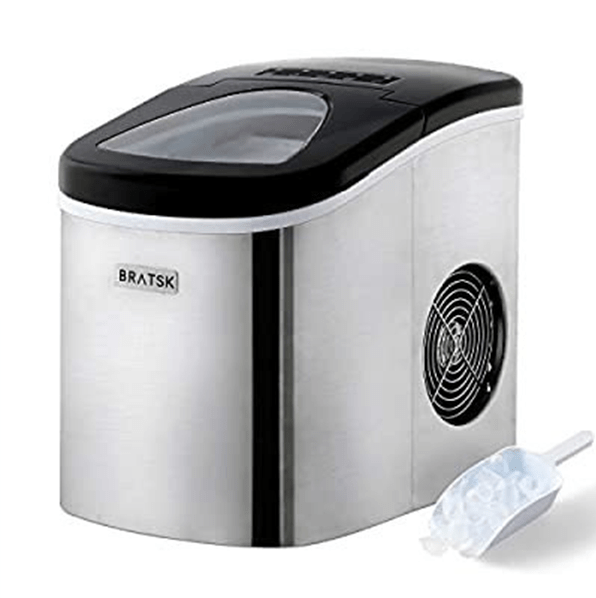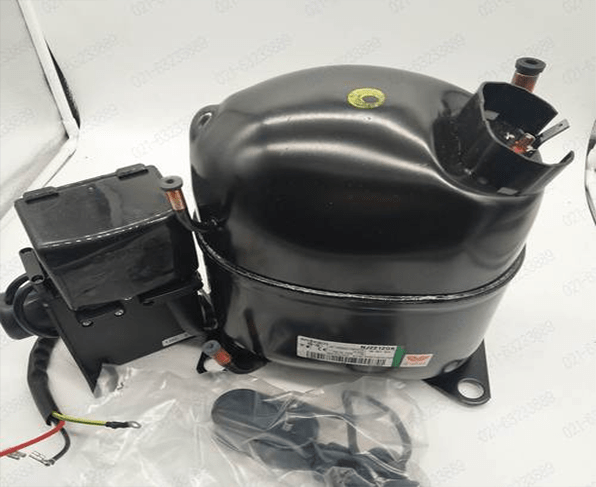
Figure 1: Countertop ice maker.
Countertop ice makers are a convenient and efficient way to produce ice at home or in the office. However, like any other appliance that handles food or beverages, it is important to clean your countertop ice maker regularly to prevent the buildup of bacteria, mold, and other harmful substances.
In this guide, we will walk you through the steps of how to clean your countertop ice maker to keep it functioning properly and producing clean and safe ice.
1. Before You Begin
Before you start cleaning your countertop ice maker, make sure to unplug the machine and empty the ice storage bin. This will prevent any electrical hazards and ensure that you have access to all the surfaces that need to be cleaned.
Additionally, you should wear gloves and safety goggles to protect your hands and eyes from any cleaning solutions or debris that may be present.

Figure 2: Unplug the power supply.
2. Cleaning the Exterior
The exterior of your countertop ice maker can accumulate dust, dirt, and other particles that can affect its performance and appearance. To clean the exterior, you can use a soft cloth or sponge and a mild cleaning solution, such as dish soap and water. Avoid using harsh chemicals or abrasive materials that can scratch or damage the surface.
1. Mix a cleaning solution: Mix a few drops of dish soap with warm water in a bowl or bucket.
2. Wipe the exterior: Dip a soft cloth or sponge into the cleaning solution and wring out the excess water. Wipe the exterior of the machine, starting from the top and working your way down. Pay extra attention to any areas that are particularly dirty or hard to reach, such as the corners or the underside of the machine.
3. Rinse and dry: Once you have cleaned the exterior, rinse the cloth or sponge with clean water and wring out the excess water. Use the damp cloth or sponge to wipe away any remaining soap residue. Then, use a dry cloth or towel to dry the exterior of the machine thoroughly.

Figure 3: Countertop automatic ice maker.
3. Cleaning the Interior
The interior of your countertop ice maker is where the ice is produced and stored. This area is more prone to the buildup of bacteria, mold, and other harmful substances, so it is important to clean it regularly. To clean the interior, you will need to remove the ice-making components and clean them separately.
1. Remove the ice-making components: Depending on the design of your countertop ice maker, you may need to remove the ice tray, the water reservoir, and the evaporator plate to access the interior. Refer to the manufacturer's instructions to determine how to remove these components safely.
2. Mix a cleaning solution: Mix a cleaning solution of one part white vinegar and three parts warm water in a bowl or bucket. Vinegar is a natural disinfectant that can help remove stubborn stains and odors.
3. Soak the components: Soak the ice-making components in the cleaning solution for 10-15 minutes. Use a soft-bristled brush or sponge to scrub away any dirt or residue that may be present.
4. Rinse and dry: Once you have cleaned the components, rinse them thoroughly with clean water to remove any remaining cleaning solution. Use a dry cloth or towel to dry the components completely before reassembling the machine.
5. Clean the interior of the machine: Use a soft-bristled brush or sponge to clean the interior of the machine, paying extra attention to any hard-to-reach areas. Use the same cleaning solution of one part white vinegar and three parts warm water to disinfect and deodorize the interior.
6. Rinse and dry: After cleaning the interior, rinse it thoroughly with clean water to remove any remaining cleaning solution. Then, use a dry cloth or towel to dry the interior completely.

Figure 4: Ice maker compressor.
4. Final Steps
Once you have cleaned the exterior and interior of your countertop ice maker, you can reassemble the machine and plug it back in. Before using the machine again, make sure to run a few cycles of ice-making and discard the first few batches of ice to ensure that any remaining cleaning solution or debris is removed.
5. FAQs
5.1 Can I Clean My Ice Maker with Vinegar?
Yes, you can clean your ice maker with vinegar. White vinegar is a natural and effective cleaning solution that can help remove mineral buildup, mold, and other debris that may accumulate in your ice maker over time.
5.2 How Do You Clean Mold off a Countertop Ice Maker?
To clean mold off a countertop ice maker, you will need to use a cleaning solution that is specifically designed to kill mold and mildew. One effective solution is a mixture of equal parts white vinegar and water.
First, unplug the ice maker and remove any removable parts, such as the ice tray and water reservoir. Then, apply the cleaning solution to the affected area using a soft-bristled brush or sponge.
Let the solution sit for a few minutes before rinsing it off with clean water. Before using the ice maker again, make sure to dry all the components thoroughly and run a few cycles to ensure that all the cleaning solution is removed.
5.3 How Do Portable Ice Makers Self Clean?
The self-cleaning function of the portable ice maker usually involves circulating a cleaning solution through the ice maker and then draining it out. The specific method of self-cleaning can vary depending on the model of the ice maker, so it is important to refer to the manufacturer's instructions for specific directions on how to use the self-cleaning function.
Some portable ice makers also come with a cleaning indicator that alerts you when it's time to clean the machine.

Figure 5: Countertop ice maker application scenario.
5.4 How Often Should You Clean Your Portable Ice Maker?
You should clean your portable ice maker at least once every three months to prevent the buildup of mineral deposits, mold, and other debris that can affect its performance and safety.
However, if you use your ice maker frequently or live in an area with hard water, you may need to clean it more often. It's also a good idea to clean the ice maker before storing it for an extended period or if you notice any changes in the taste or quality of the ice.
Refer to the manufacturer's instructions for specific cleaning and maintenance recommendations for your portable ice maker.
6. Conclusion
Cleaning your countertop ice maker regularly is essential to ensure that it functions properly and produces clean and safe ice. By following the steps outlined in this guide, you can keep your countertop ice maker in top condition and enjoy fresh and delicious ice whenever you need it.
Remember to refer to the manufacturer's instructions for specific cleaning and maintenance recommendations, and to replace any worn or damaged components as needed.
Related Info
Refrigerated Air Dryer: Everything You Need to KnowFreeze Drying vs Dehydration: Is a Freeze Dryer and a Dehydrator the Same Thing
How Does a Countertop Ice Maker Work?
Dryer Heat Pump vs Condenser: Which One Should You Choose?
Industrial Heat Pump Dryer: Everything You Need to Know


